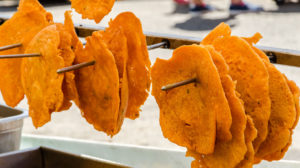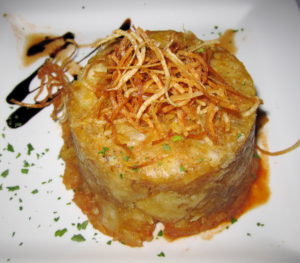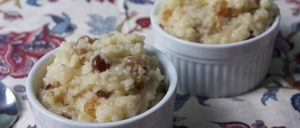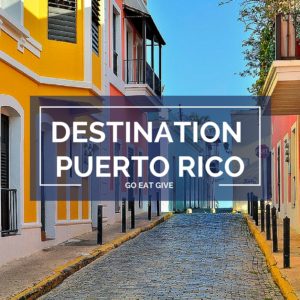The coast, the mountains, and the home: that is the landscape of authentic Puerto Rican cuisine painted by Atlanta-based renowned Chef, Hector Santiago. Known for his stint on Top Chef, Santiago has made a name for himself through his restaurants Pura Vida, and his most recent foray in the Atlanta food scene, El Super Pan.
INSPIRED BY THE WORLD – El Super Pan boasts traditional dishes from all around the Spanish Caribbean (Puerto Rico, Cuba, and the Dominican Republic), some of which have very non-traditional fusion elements from other international cuisines, particularly flavors from East Asia. One would never see pork belly buns, fish sauce, or anchovies in Puerto Rican cuisine, but Santiago is a firm believer in the expansion of what we know about food. He is inspired to create by the fresh ingredients grown in whatever environment he happens to be cooking in.

El Super Pan’s pork belly bun, a fusion of Spanish-Caribbean and Korean cuisine
Santiago, along with other Atlanta-based Puerto Rican Chefs, Julio Delgado and Andre Gomez, will be planning a menu for Go Eat Give Destination Puerto Rico that provides a true glimpse into the everyday food in Puerto Rico; a real slice of life. But don’t get me wrong, there is nothing “run-of-the-mill” about everyday Puerto Rican food. It is full of layers of spices, textures, and strong flavors, because food and eating is such a big part of Puerto Rican culture. Santiago said that when he was a kid in Puerto Rico, cooking at a young age was extremely common, and all of his friends used to come to his house to cook together, laugh, play, and eat.
Two staples of Puerto Rican cuisine that you will see as a base for just about every Puerto Rican dish are Sofrito and Adobo. Sofrito is a rich mixture of peppers, onions, tomatoes, salt and pepper that serves as a starting out place for much of Puerto Rican cuisine. Adobo is a complementary mixture of spices that one would be extremely remiss to leave out of their Puerto Rican dish: cumin, corriander, oregano, black pepper, garlic, etc. These spices and vegetable bases make cuisine so flavorful and bold, it’s easy to take for granted. Santiago recalled the first time that he tried oatmeal in the mainland United States, and he thought, “what is this?” “Puerto Ricans hate bland food,” he laughed “at home oatmeal has vanilla, orange zest, cinnamon, sugar, a little salt. It’s one of those big differences.”
YEAR-ROUND FOOD FESTIVALS – Santiago explained that there is an immense festival culture in Puerto Rico. There is always something going on and with that, comes the food. He joked, “If you’re not drinking Cerveza in Puerto Rico, you’re probably eating!” There is truly a festival for every occasion on Puerto Rico and for the harvest of every possible staple food you could think of. There are coffee festivals, banana festivals, taro festivals, corn festivals, tomato festivals, orange festivals and more than five different festivals dedicated to crab. Puerto Rico is also a growing home to very large, internationally recognized culinary festivals, like Saborea (savor) where over 70 chefs, brewers, mixologists, and baristas come together to celebrate the best the country has to offer. I’m not sure there are many other places in the world where food is SO central and so celebrated–that’s how you know it’s going to be good.

Bacalaitos–fritters of salted cod, a common beach snack
THE COAST – To start, the chefs will present a taste of the coast. Attendees will taste bacalitos, which are fritters of salted cod. Santiago says bacalaitos are a very traditional Puerto Rican dish, despite the fishes’ natural cold water habitat. They are a food tradition left over from Spanish influence, so they import the cod to keep the tradition alive. There will be a variety of empanadas and alcapurrias. Alcapurrias, unlike empanadas, are made with a batter of mashed root vegetables like plantains and taro, and are often stuffed with fish or crab. This is the food people think of and crave in the coastal regions of Puerto Rico: little, deliciously crunchy, fried seafood snacks that are easy to grab and go.

An example of mofongo, a staple of Puerto Rican cuisine
THE MOUNTAINS – For the main courses, Santiago, Gomez, and Delgado will prepare a taste of the mountains, a frequent weekend escape destination for many Puerto Rican families. One of the dishes include Mofongo. Although you will find similar cuisine throughout the Spanish Caribbean, mofongo is thought of as originally Puerto Rican. It features green plantains mashed, fried, and served with crispy pork chops spiced with, of course, adobo and garlic. Pork is a common and celebrated form of protein in Puerto Rico. So, we will also get to taste Lechon Asao, pork slow roasted until the skin is thin and crispy, which will be served with arroz con gandules (pigeon peas).

Arroz con leche, a puerto rican rice pudding
THE CASA – For the final course, we’ll get to taste Puerto Rican desserts commonly served at home such as flan, arroz con dulce, rice pudding with cinnamon, coconut and raisins, and a Puerto Rican favorite: papaya con queso. As I was speaking with him, I could tell Santiago clearly favored the latter as he nodded and said, “It’s amazing.”
All of these thoughtfully planned out and expertly prepared dishes, combined with the live music and dancing always present at Puerto Rican food festivals, we are all going to feel as if we are actually there. We can’t think of a better way to celebrate this amazingly rich culture than through a fiesta of food, one of the things it holds most dear. So let’s eat!
GET YOUR TICKETS TO DESTINATION PUERTO RICO TODAY!
Read more about Hector Santiago and El Super Pan
